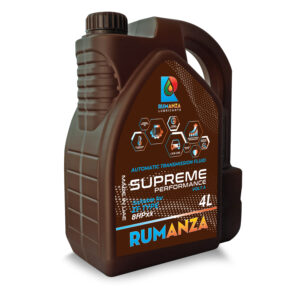What is ATF? Types of Transmission Fluid & When to Change It
What is Automatic Transmission Fluid (ATF)?
Automatic Transmission Fluid (ATF) is a specialized lubricant designed to reduce friction, cool transmission components, and facilitate smooth gear shifts in automatic transmissions. Unlike engine oil, which primarily lubricates moving parts, ATF serves multiple functions:
Hydraulic Fluid – Transfers power to engage gears via hydraulic pressure.
Lubricant – Reduces wear on gears, bearings, and clutch plates.
Coolant – Dissipates heat generated by friction.
Corrosion Inhibitor – Protects metal components from rust and oxidation.
Seal Conditioner – Keeps gaskets and seals flexible to prevent leaks.
How Does ATF Work?
In an automatic transmission, the torque converter and valve body rely on pressurized ATF to engage gears smoothly. When the fluid degrades, it loses its viscosity and hydraulic properties, leading to rough shifting, overheating, or transmission failure.
Key Functions of Transmission Fluid
| Explanation | Why It Matters | |
|---|---|---|
| Lubrication | Reduces friction between gears, bearings, and clutch plates. | Prevents premature wear and overheating. |
| Heat Dissipation | Absorbs and transfers heat away from transmission components. | Prevents overheating, which can warp parts. |
| Hydraulic Pressure | Enables smooth gear shifts by pressurizing the valve body. | Ensures seamless acceleration and deceleration. |
| Cleaning & Protection | Contains detergents to prevent sludge and varnish buildup. | Extends transmission lifespan. |
| Seal Conditioning | Keeps rubber seals and gaskets flexible. | Prevents leaks and maintains pressure. |
Without proper ATF, your transmission can suffer from slipping gears, delayed shifts, or complete failure—leading to expensive repairs.
Types of Transmission Fluid (In-Depth Comparison)
Not all transmission fluids are the same. Different transmissions require specific formulations. Below is a detailed breakdown of the most common types:
1. Dexron/Mercon (Conventional ATF)
Developed by: General Motors (Dexron) & Ford (Mercon).
Used in: Older automatic transmissions.
Latest Versions: Dexron VI, Mercon V (improved thermal stability).
Pros:
Affordable and widely available.
Suitable for most older vehicles.
Cons:
Less stable at high temperatures compared to synthetic ATF.
Requires more frequent changes.
2. Synthetic ATF
Composition: Chemically engineered for superior performance.
Used in: High-performance, luxury, and heavy-duty vehicles.
Pros:
Better thermal stability and oxidation resistance.
Longer lifespan (up to 100,000 miles in some cases).
Cons:
More expensive than conventional ATF.
Not always compatible with older transmissions.
3. CVT Fluid (Continuously Variable Transmission Fluid)
Used in: CVT transmissions (e.g., Nissan, Honda, Toyota).
Key Feature: Provides friction modification for belt-and-pulley systems.
Pros:
Optimized for smooth, stepless gear transitions.
Reduces belt slippage.
Cons:
More expensive than conventional ATF.
Must use manufacturer-recommended fluid (e.g., Nissan NS-3, Honda HCF-2).
4. Dual-Clutch Transmission Fluid (DCTF)
Used in: Performance cars (e.g., Volkswagen DSG, Ford PowerShift).
Key Feature: Handles high clutch engagement pressure.
Pros:
Enhances shift speed and performance.
Better heat resistance.
Cons:
Expensive and requires specialized service.
5. Manual Transmission Fluid (MTF)
Used in: Manual transmissions (some use gear oil instead).
Key Feature: Thicker viscosity for gear protection.
Pros:
Better shear stability under heavy loads.
Cons:
Not interchangeable with ATF.
Comparison Table: ATF Types
| Type | Best For | Pros | Cons | Change Interval |
|---|---|---|---|---|
| Dexron/Mercon | Older automatics | Affordable, widely available | Less heat-resistant | 30,000–60,000 miles |
| Synthetic ATF | Modern automatics, performance cars | Longer lifespan, better heat resistance | Expensive | 60,000–100,000 miles |
| CVT Fluid | CVT transmissions (Nissan, Honda) | Prevents belt slippage | Must use OEM fluid | 60,000–90,000 miles |
| DCT Fluid | Dual-clutch transmissions (VW, Ford) | Faster shifts, high durability | Costly, specialized service | 40,000–60,000 miles |
| Manual Transmission Fluid | Manual transmissions | High shear stability | Not for automatics | 50,000–100,000 miles |
Signs That Your Transmission Fluid Needs Changing
Ignoring ATF maintenance can lead to transmission failure. Watch for these warning signs:
1. Discolored or Burnt Fluid
Fresh ATF: Red/pink, translucent.
Degraded ATF: Dark brown/black, burnt smell.
2. Slipping Gears
Engine revs but car doesn’t accelerate properly.
3. Rough or Delayed Shifting
Jerky movements when shifting gears.
4. Unusual Noises
Whining, grinding, or clunking sounds.
5. Transmission Overheating
Burning smell or warning lights.
6. Check Engine Light
Transmission-related error codes (e.g., P0700).
How Often Should You Change ATF?
| Transmission Type | Normal Driving | Severe Conditions (Towing, Stop-and-Go) |
|---|---|---|
| Conventional ATF | 30,000–60,000 miles | 15,000–30,000 miles |
| Synthetic ATF | 60,000–100,000 miles | 30,000–50,000 miles |
| CVT Fluid | 60,000–90,000 miles | 40,000–60,000 miles |
| DCT Fluid | 40,000–60,000 miles | 30,000–50,000 miles |
Note: Some manufacturers claim “lifetime” ATF, but experts recommend changing it every 60,000–100,000 miles for longevity.
Transmission Fluid Flush vs. Drain & Fill – Which is Better?
| Method | Pros | Cons |
|---|---|---|
| Drain & Fill | – Less expensive – Lower risk of dislodging debris | – Only replaces 30-50% of fluid |
| Flush (Machine Exchange) | – Replaces 90-100% of old fluid – Better for heavily contaminated systems | – More expensive – Risk of damaging seals in older transmissions |
Recommendation: For high-mileage cars, drain & fill is safer. For newer vehicles, a flush can be beneficial.
Final Thoughts
Rumanza Automotive Transmission Fluid is vital for your vehicle’s performance and longevity. Choosing the right type, monitoring its condition, and changing it at recommended intervals can prevent costly repairs.
Key Takeaways:
✔ Use manufacturer-recommended ATF for optimal performance.
✔ Check fluid levels regularly (every oil change).
✔ Change ATF every 30,000–100,000 miles, depending on type and usage.
✔ Avoid ignoring warning signs like slipping gears or burnt smells.
By following these guidelines, you can extend your transmission’s lifespan and enjoy smoother, more reliable driving.
FAQs
ATF is a specialized hydraulic fluid that lubricates, cools, and facilitates smooth gear shifts in automatic transmissions. It also acts as a hydraulic medium to engage gears and prevent wear.
Conventional ATF: Every 30,000–60,000 miles.
Synthetic ATF: Every 60,000–100,000 miles.
CVT/DCT Fluid: Every 40,000–90,000 miles (check manufacturer guidelines).
No! Always use the manufacturer-recommended ATF type (e.g., Dexron VI, Mercon V, CVT-specific fluid). Using the wrong fluid can cause shifting problems or transmission damage.
Over time, ATF degrades, leading to:
✔ Slipping gears
✔ Overheating
✔ Hard shifts
✔ Complete transmission failure (costing thousands in repairs).
Park on a level surface and warm up the engine.
Locate the dipstick (usually near the engine).
Pull it out, wipe clean, reinsert, and check the level & color.
Good fluid: Red/pink and clear.
Bad fluid: Dark brown/black with a burnt smell.
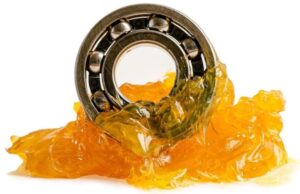
Calcium Sulphonate Grease UAE | High-Temperature Grease
Calcium Sulphonate Grease UAE | High-Temperature Grease Discover More Introduction: The Unforgiving Demands of UAE Industry The United Arab Emirates stands as a global titan of industry and infrastructure. From the sprawling metallurgical plants in Mussafah and the massive port operations of Jebel Ali to the relentless pace of construction shaping Dubai’s skyline and the vast logistics hubs of Al Ain, the machinery that powers this nation operates under extreme duress. Soaring ambient temperatures that regularly exceed 45°C, pervasive dust

What is Rubber Process Oil? | Guide to Applications, Benefits, and Selection
What is Rubber Process Oil? | Guide to Applications, Benefits, and Selection Discover More In the sophisticated ecosystem of rubber manufacturing, raw polymers are the canvas, but rubber process oil is the essential medium that brings the masterpiece to life. It is the critical component that transforms rigid, unworkable raw materials into the versatile, durable, and high-performance rubber products that define modern industry and daily convenience. For specialists dedicated to chemical innovation and precision, such as the team at Rumanza Lubricants, the science

Which UAE Lubricants manufacturers is Best for High-Mileage Engines?
Which UAE Lubricants manufacturers is Best for High-Mileage Engines? Discover More The sprawling deserts and bustling metropolises of the United Arab Emirates present a uniquely demanding environment for vehicles, pushing engine lubrication technology to its absolute limits. From the scorching summer heat that can cause conventional oils to thin out and lose protective properties, to the endless stop-start traffic of cities like Dubai and Abu Dhabi that promotes sludge and acidic buildup, our cars endure a severe service regimen unlike
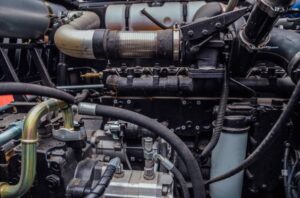
What Vehicles Use Kerasene? A Comprehensive Guide
What Vehicles Use Kerasene? A Comprehensive Guide to Fueling Beyond Gasoline Discover More When we think of vehicle fuel, gasoline and diesel immediately come to mind. They are the lifeblood of our daily commutes, the power behind the trucks that deliver our goods, and the standard by which we measure automotive progress. But venture beyond the everyday, into the realms of high-altitude aviation, rugged agricultural machinery, and groundbreaking space exploration, and you’ll discover a different, equally vital fuel that operates

How To Chose Antioxidant Additives in UAE | Industrial Grade Chemicals?
How To Chose Antioxidant Additives in UAE | Industrial Grade Chemicals? Discover More In the heart of a rapidly industrializing region, the United Arab Emirates stands as a beacon of manufacturing, logistics, and heavy industry. From the sprawling automotive workshops of Dubai to the massive petrochemical complexes in Ruwais, the performance and longevity of machinery are paramount. At the core of this operational excellence lies a critical, yet often overlooked, component: industrial lubricants and fluids. These lifeblood substances are constantly
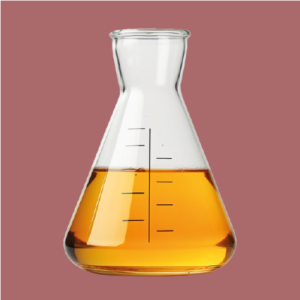
Viscosity Index Improvers UAE – Improve Lubricant Performance
Viscosity Index Improvers UAE – Improve Lubricant Performance Discover More In the heart of the United Arab Emirates, where ambition is matched only by the scale of its infrastructure, the machinery that builds and powers the nation faces a relentless adversary: the climate. The combination of extreme heat, temperature volatility, abrasive dust, and intense UV radiation creates a perfect storm of conditions that relentlessly attack the lifeblood of all mechanical systems—the lubricant. For maintenance managers, plant operators, and fleet owners,

Compressor Oils UAE | Lubricants for Air Compressors
Compressor Oils UAE | Lubricants for Air Compressors Discover More In the relentless engine of the UAE’s economy, where ambition is matched only by the scale of its construction and industry, air compressors are the indispensable workhorses. They are the silent force driving the pneumatic tools that build our skylines, the automated machinery in our factories, the climate control systems in our buildings, and even the processes in oil and gas refineries. Yet, within these critical machines, a component often

How to Chose Best Diesel Engine Oil in UAE for Your Vehicle | Get Quote
Guide to Choosing the Best Diesel Engine Oil in UAE For Your Vehicle Discover More In the United Arab Emirates, the relationship between a driver and their vehicle is forged in fire. The unrelenting sun, the searing asphalt, and the ever-present fine sand create an operating environment that is among the most punishing on Earth. For the diesel engines that power the UAE’s growth—from the rugged Land Cruisers conquering dunes to the Ford F-150s on city streets and the fleets
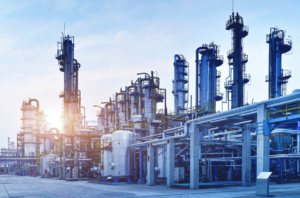
What Are the Latest Trends in Sustainable Industrial Oils for UAE Manufacturers?
What Are the Latest Trends in Sustainable Industrial Oils for UAE Manufacturers? Discover More Industrial oils form the lifeline of heavy industries, enabling machines, turbines, compressors, and production lines to function seamlessly. They reduce friction, cool equipment, prevent wear, and ensure uninterrupted operations. In a fast-developing economy like the UAE—where energy, petrochemicals, construction, and manufacturing drive growth—industrial oils are indispensable. But today, the conversation around industrial oils is no longer limited to performance. Global concerns about climate change, carbon emissions,
